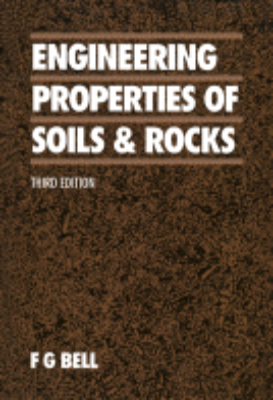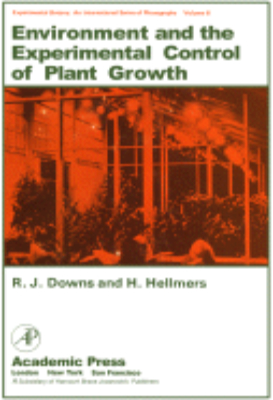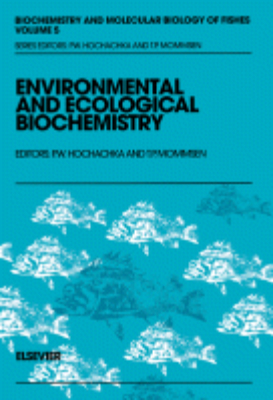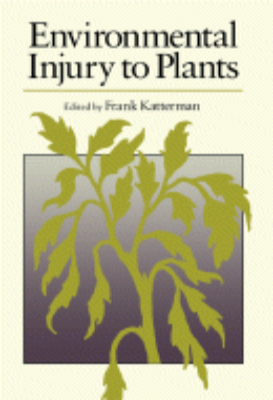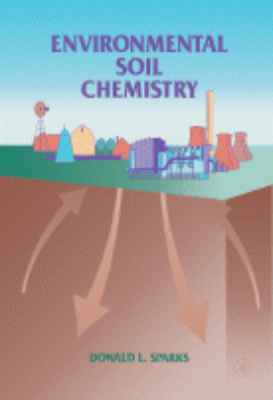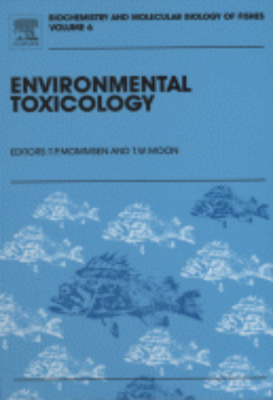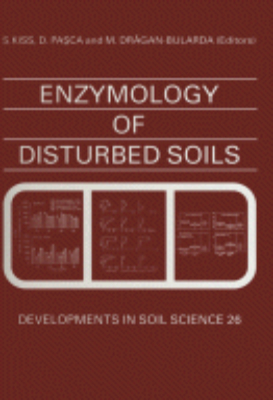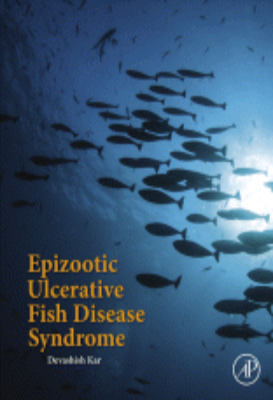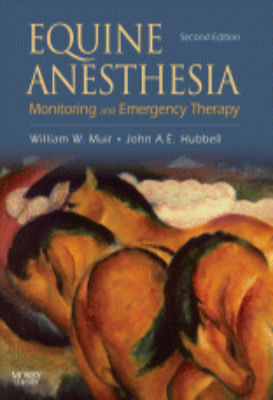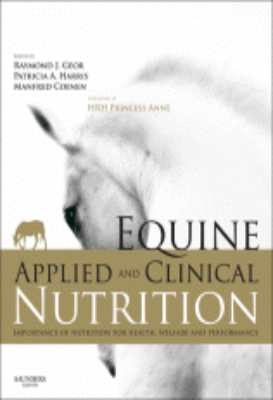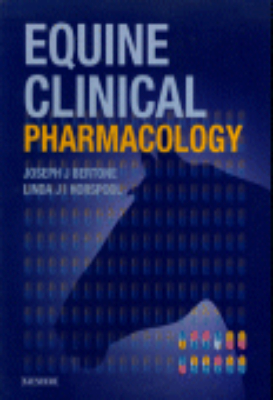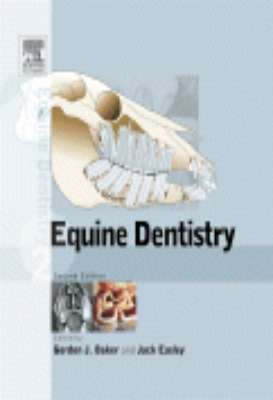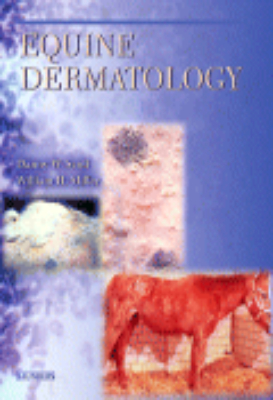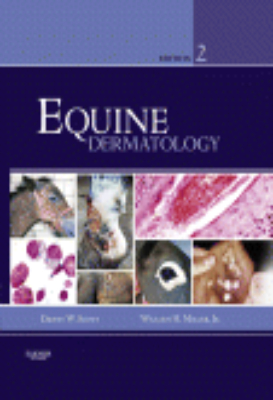ebooks
Emergency Procedures for the Small Animal Veterinarian
The second edition of the hugely successful Emergency Procedures for the Small Animal Veterinarian gives vets all the information they need to form a diagnosis quickly and accurately, establish a prognosis and recommend treatment for a patient suffering an illness, injury or toxic event. Easy-to-read bullet-point text gives quick access to the most essential information needed to treat emergency cases quickly and efficiently. Extensive practical appendices provide easy reference to essential data including commonly used drugs and supplements, drugs in special circumstances (e.g. safe drugs in pregnancy, drugs to avoid in renal failure etc), clinical chemistry and laboratory data, conversion tables and much more. With step-by-step coverage of cardiopulmonary emergencies, trauma gastrointestinal emergencies, toxicological events, a greatly expanded chapter on exotic pets, and much more, Emergency Procedures for the Small Animal Veterinarian provides all the facts vets need to help them save more lives faster!
Emery and Rimoin’s Principles and Practice of Medical Genetics
For decades, Emery and Rimoins Principles and Practice of Medical Genetics has provided the ultimate source for practicing clinicians to learn how the study of genetics can be integrated into practice. With almost 5,000 pages of detailed coverage, this fully online sixth edition of the classic reference adds the latest information on prenatal diagnosis, genetic screening, genetic counseling, and treatment strategies to complete its coverage of the growing field for medical students, residents and physicians involved in the care of patients with genetic conditions. Clinically oriented information is supported by expanded sections on basic principles of genetics, research approaches, and analytics to embrace the evolving population of students, researchers, and practitioners who are integrating their work to provide advanced diagnosis, prevention and treatment of human disease. With advances in high-throughput technologies propelling the closer integration of lab and clinical work, this edition bridges the gap between high-level molecular genetics and clinical application.
Engineering for Storage of Fruits and Vegetables
Engineering for Storage of Fruits and Vegetables is a comprehensive reference that provides an understanding of the basic principles of cold storage load estimation, refrigeration capacity calculations for various types of cold storages, and other topics of evaporative cooling, thus demonstrating the important principles for designing low cost precooling chambers. The book is written in an accessible manner to provide a solid understanding of different environments and their considerations to give readers the confidence they need to design suitable packaging materials by understanding parameters, including reaction rates, deteriorative reactions, Arrhenius equations, Q10, K, D, Z parameters, and their influence on reaction rates.
Engineering Properties of Soils and Rocks: 1983
Engineering Properties of Soils and Rocks, Second Edition provides a survey of the engineering properties of the major types of soil and rock. The book is comprised of nine chapters that tackle the various aspects of soils and rocks. Chapter 1 covers the origin of soil and the basis of soil classifications. Chapters 2 to 5 discuss the different types of soils, such as coarse grained soils, cohesive soils, and organic soils. Chapter 6 deals with the engineering behavior of rock masses, while Chapter 7 talks about the engineering classifications of weathered rocks and rock masses. Chapter 8 discusses the engineering properties of rocks, and Chapter 9 covers subsurface waters and ground conditions. The text will be of great use to both undergraduate students and practitioners of engineering geology, civil engineering, and mining engineering.
Engineering Properties of Soils and Rocks: 1992
Engineering Properties of Soils and Rocks, Third Edition serves as a guide to the engineering properties and behavior of soils and rocks. The text also complements other texts on rock and soil mechanics. The book covers topics such as the properties and classification of soils such as tills and other kinds of soils related to cold climates, tropical soils, and organic soils such as peat. The text also includes the engineering behavior and properties, classification and description, discontinuities, and weathering of rocks and rock masses. The monograph is recommended for engineers who would like to know about the properties of soils and rocks and the application of their study in the field of engineering.
Environment and the Experimental Control of Plant Growth
Environment and the Experimental Control of Plant Growth centers on the general role of environmental factors in plant growth and methods of providing the desired levels and limit of control. The book is organized into seven chapters focusing on the various factors in the environment, such as temperature, light, carbon dioxide, and water. It also describes the controlled environments for plant research. This book will help biologists understand what he is buying or constructing in terms of environment variability in plant growth facilities. It will also provide some help and guidance to those who have encountered the problem of not obtaining the degree of control they have expected in the units they have in hand.
Environmental and Animal Rights Extremism, Terrorism, and National Security
"As concerns about human treatment of the environment and animals have increased over the years, so have decentralized and extremist groups related to these causes. Environmental and Animal Rights Extremism, Terrorism, and National Security analyzes the international development of radical movements relating to environmental concerns and animal rights in the context of the threats they pose to national security. In addition to tracing the factors responsible for the rapid growth of these movements over the last 25 years, this text presents countermeasures that governments can deploy to neutralize the risk posed by these threats now and in the future. Bringing to bear new developments such as cyber activity and online activism, Environmental and Animal Rights Extremism, Terrorism, and National Security offers an examination of the direct and indirect violence, lone-wolf terrorism, and leaderless resistance that have characterized these radical wings from their inception.By not only identifying the tactics and organizational structures often employed by these groups, but also addressing future trends toward increased radicalization, Environmental and Animal Rights Extremism, Terrorism, and National Security is an important resource for identifying, anticipating, and mitigating threats posed by such movements. Key Features. Describes the psychological, social, and organizational mechanisms responsible for the functioning of the extremist wings of the interconnected environmental and animal rights movements in the context of national security. Identifies the main tactical and organizational ways these movements develop, moving from hierarchical organization to network structures, leaderless resistance, and lone-wolf activities. Covers radical environmental and animal rights groups, including Earth First!, Animal Liberation Front, Earth Liberation Front, Animal Rights Militia, and the Sea Shepherd Conservation Society. Looks to future trends in radicalization of these movements"
Environmental Aspects of Housing for Animal Production
Environmental Aspects of Housing for Animal Production is concerned with environmental aspects of housing farm animals. The discussions are organized around physical and physiological principles; environmental influences on reproduction; environmental influences on the productivity of farm animals; optimal housing environments for temperate and cool climates; housing environments for hot climates; engineering and control of the house environment; and the constraints of welfare and disease. This text consists of 32 chapters divided into nine sections. The first chapter explores the physiological mechanisms whereby the food- or fiber-producing animals maintain a constant body temperature under climatic extremes and the possible impact that these physiological processes may have on productive systems. This discussion is followed by chapters on the influence of climate on the decision to house livestock; the effect of the environment on animal reproduction; thermal influences on poultry; and the importance of ventilation and temperature control. This text also considers the poultry housing problems in tropical and subtropical climates; insulation of animal houses; and the interaction between feathering and egg production in laying hens. This book will appeal to those working in the field of housing for animal production, both in research and development and at a practical level.
Environmental Control of Plant Growth
Environmental Control of Plant Growth consists of the proceedings of a symposium held at Canberra, Australia, in August 1962. The symposium aims to consider the natural microenvironments of plants and the associations between natural and controlled environments. It also considers the physiological and genetic bases of responses by plants to environmental conditions. The book contains 24 chapters and discusses the physics of plant environment, as well as the physical quantities within plant-air layers. It also elucidates the energy and water balance, light relations, gas exchange, and energy relations in plant communities. The book also looks into the respiration of various organs and of whole plants. Lastly, the effects of the environment, including climatic factors, on the metabolism of plant cells are addressed.
Environmental Injury to Plants
The reaction of plant tissue to stress is of critical importance to growers concerned with the production of horticultural or agronomical plants on a large scale. This book discusses several factors that contribute to plant stress, including freezing and chill injury, drought stress, heat shock, salt stress, and toxic metals. The detection of plant stress by remote sensing devices is also examined.
Environmental Physiology of Plants
"This is the third edition of an established and successful university textbook. The original structure and philosophy of the book continue in this new edition, providing a genuine synthesis of modern ecological and physiological thinking, while entirely updating the detailed content. New features include a fresh, unified treatment of toxicity, emphasizing common features of plant response to ionic, gaseous, and other toxins, explicit treatment of issues relating to global change, and a section on the role of fire in plant physiology and communities. The illustrations in the text are improved over previous editions, including color plates for the first time, and the authors' continuing commitment to providing wide citation of the relevant literature has further improved the reference list. This revision of Environmental Physiology of Plants will ensure the reputation of this title as a useful and relevant text well into the 21st century. Key Features. Includes enhanced illustrations, now with color plates. Examines new molecular approaches which can be harnessed to solve problems in physiology. Features new topics such as the unified treatment of toxicity, an explicit treatment of the issues relating to global change, and a section on the role of fire"
Environmental Soil Chemistry
As the author states in his Preface, this book is written at a time when scientific and lay communities recognize that knowledge of environmental chemistry is fundamental in understanding and predicting the fate of pollutants in soils and waters, and in making sound decisions about remediation of contaminated soils. Environmental Soil Chemistry presents the fundamental concepts of soil science and applies them to environmentally significant reactions in soil. Clearly and concisely written for undergraduate and beginning graduate students of soil science, the book is likewise accessible to all students and professionals of environmental engineering and science. Chapters cover background information useful to students new to the discipline, including the chemistry of inorganic and organic soil components, soilacidity and salinity, and ion exchange and redox phenomena. However, discussion also extends to sorption/desorption, oxidation-reduction of metals and organic chemicals, rates of pollutant reactions as well as technologies for remediating contaminated soils. Supplementary reading lists, sample problems, and extensive tables and figures make this textbook accessible to readers.
Enzyme Catalysis and Regulation
Enzyme Catalysis and Regulation is an introduction to enzyme catalysis and regulation and covers topics ranging from protein structure and dynamics to steady-state enzyme kinetics, multienzyme complexes, and membrane-bound enzymes. Case studies of selected enzyme mechanisms are also presented. This book consists of 11 chapters and begins with a brief overview of enzyme structure, followed by a discussion on methods of probing enzyme structure such as X-ray crystallography and optical spectroscopy. Kinetic methods are then described, with emphasis on the general principles of steady-state and transient kinetics. The chemical principles involved in enzyme catalysis are also discussed, and case studies of a few well-documented enzymes are presented. The regulation of enzyme activity is analyzed from a nongenetic viewpoint, with particular reference to binding isotherms and models for allosterism. Two particular enzymes, aspartate transcarbamoylase and phosphofructokinase, are used as examples of well-studied regulatory enzymes. The last two chapters focus on multienzyme complexes and membrane-bound enzymes. This monograph is intended for graduate students, advanced undergraduates, and research workers in molecular biology and biochemistry.
Epigenetics and Dermatology
Epigenetics and Dermatology explores the role of epigenetics in the pathogenesis of autoimmune-related skin diseases and skin cancer. Leading contributors cover common and uncommon skin conditions in which extensive epigenetic research has been done. They explain how environmental exposures (chemicals, drugs, sunlight, diet, stress, smoking, infection, etc.) in all stages of life (from a fetus in-utero to an elderly person) may result in epigenetic changes that lead to development of some skin diseases in life. They also discuss the possibilities of new and emergent epigenetic treatments which are gradually being adopted in management of various skin diseases. Chapters follow a conventional structure, covering fundamental biology of the disease condition, etiology and pathogenesis, diagnosis, commonly available treatments, and epigenetic therapy where applicable.
Epigenetics in Human Disease
Epigenetics is one of the fastest growing fields of sciences, illuminating studies of human diseases by looking beyond genetic make-up and acknowledging that outside factors play a role in gene expression. The goal of this volume is to highlight those diseases or conditions for which we have advanced knowledge of epigenetic factors such as cancer, autoimmune disorders and aging as well as those that are yielding exciting breakthroughs in epigenetics such as diabetes, neurobiological disorders and cardiovascular disease. Where applicable, attempts are made to not only detail the role of epigenetics in the etiology, progression, diagnosis and prognosis of these diseases, but also novel epigenetic approaches to the treatment of these diseases. Chapters are also presented on human imprinting disorders, respiratory diseases, infectious diseases and gynecological and reproductive diseases. Since epigenetics plays a major role in the aging process, advances in the epigenetics of aging are highly relevant to many age-related human diseases. Therefore, this volume closes with chapters on aging epigenetics and breakthroughs that have been made to delay the aging process through epigenetic approaches. With its translational focus, this book will serve as valuable reference for both basic scientists and clinicians alike.
Epigenetics in Psychiatry
Epigenetics in Psychiatry covers all major areas of psychiatry in which extensive epigenetic research has been performed, fully encompassing a diverse and maturing field, including drug addiction, bipolar disorder, epidemiology, cognitive disorders, and the uses of putative epigenetic-based psychotropic drugs. Uniquely, each chapter correlates epigenetics with relevant advances across genomics, transcriptomics, and proteomics. The book acts as a catalyst for further research in this potentially very important and useful area of psychiatry. The elucidation of basic principles of epigenetic biology points to the creation of more optimal and effective therapies for major classes of psychiatric disease. In this regard, epigenetic therapy, the use of drugs to correct epigenetic defects, may help in the pharmacotherapy of patients with these disorders. With time, such advances may eventually point to replacements for psychotropic drugs presently of symptomatic value and low efficacy. Moreover, there is evidence to suggest that other forms of treatment commonly used in the management of psychiatric disorders, like psychotherapy and electroconvulsive therapy, may also act by epigenetic mechanisms.
Epizootic Ulcerative Fish Disease Syndrome
"Epizootic Ulcerative Fish Disease Syndrome covers both the background and current information on the EUS disease relevant to fisheries and aquaculture delivered in a systematic and succinct way. The book is an essential resource for the aquaculture and fisheries researcher interested in finding solutions to the spread of the disease across the globe and students in relevant programs, including an in-depth description and analysis of the disease, as well as the structure and composition of the virus, while offering prevention and control methodologies. Clinical veterinarians, aquaculture disease practitioners, farmers, and those who are interested in aquatic virology will find this book to be a useful guide on the topic. Key Features. Examines different manifestations of the disease, and includes different methodologies of studies, such as histopathological, histochemical, bacteriological, mycological, virological, and enzymological. Provides background information describing fish as a significant food source and avocation, the diversity of fishes in the globe, and the panorama of diseases fish can be exposed to. Describes all major species affected by EUS and its pattern of spread, along with suggested strategies for control and prevention"
Equine Anesthesia
All veterinary team members involved in the everyday care of horses that require anesthesia or special emergency care will benefit from this reliable and inclusive resource. This text provides all of the information needed to prepare, conduct, and monitor the administration of drugs in order to produce safe and effective anesthesia, treat pain, respond to adverse effects, and perform and monitor emergency and critical care treatment. It is the most comprehensive and detailed book available on these subjects, addressing the needs and concerns of practitioners in both hospital and field settings.
Equine Applied and Clinical Nutrition
Equine Applied and Clinical Nutrition is a landmark text that provides a comprehensive source of information on the nutrition and feeding management of horses. In this authoritative and accessible account, experts from around the world provide a global perspective while the editors tackle key controversial areas. Topics covered include the basic foundations of equine nutrition (digestive and metabolic physiology, nutrient functions and requirements), nutritional management by life stage or function, the assessment of feedstuffs and feeding programs, and clinical nutrition. Also included is discussion on feed hygiene and the role of manufacturers in feed quality and safety. The book contains abundant practical nutritional advice for the treatment of clinical conditions seen by veterinarians in their daily practice, together with the fundamental information needed to make recommendations for the nutritional management of healthy horses. Equine Applied and Clinical Nutrition provides the most substantial overview currently available of the nutritional management of key equine clinical conditions. It further presents the up-to-date scientific background needed to underpin recommendations. It will be of core relevance to equine veterinarians and nutritionists, and a valuable resource for undergraduate and graduate students, as well as lay horsemen and women who wish to be better informed about their horses nutritional needs.
Equine Behavior
Equine Behavior: A Guide for Veterinarians and Equine Scientists is the quintessential reference for all who really want to know what makes horses tick. Research in horse behavior has made great strides in recent years. This book examines the truth behind modern trends and ancient traditions. Full of insight, it rounds up the latest findings of practitioners and researchers from all over the world, drawing on both cutting-edge research and best practice. With more than 1,000 references, the book explores equine behavior from first principles, by considering the behavior of free-ranging horses and focusing on ways in which management and training influence the responses of their domestic counterparts. Equine physicians, trainers, handlers and owners all need to be students of equine behavior, because the first sign of a problem is often a change in behavior. So, whether you own, ride, lead, groom, feed or heal horses, what you observe is vital to your understanding. Behavioral problems in the stable and under saddle are a grave concern for equine veterinarians worldwide, because they can lead to poor performance, welfare issues, abuse and, ultimately, wastage. Traditionally, veterinarians gave priority to the physical health of their equine patients. This book is a unique attempt to demonstrate the way science can throw light on how and why problems and unwelcome behaviors arise. It also offers ways to bring about change for the better. Beautifully illustrated with photographs and line diagrams, Equine Behavior: A guide for veterinarians and equine scientists is an essential resource for practising veterinarians, students and enthusiasts with a specific interest in horses, ponies, and donkeys. Professional trainers and handlers, equine scientists and behavior therapists will also find its contents invaluable.
Equine Breeding Management and Artificial Insemination
Put the principles of good breeding management into practice with Equine Breeding Management and Artificial Insemination, 2nd Edition for reproductive success! Practical information on the reproductive management of both thoroughbred and warmblood breeding operations prepares you to effectively breed even problem mares and stallions. Plus, detailed content on techniques, procedures, reproductive physiology, and more help you increase reproductive efficiency as well as track and improve your results throughout each breeding season.
Equine Clinical Pharmacology
For the first time pharmacology is tackled as book in its own right. This multi-contributor text provides a complete source of information on drugs used in the horse. Each chapter covers a particular class of drugs or organ system, providing clinical information and discussing therapeutic strategies for managing disease conditions.The text is fully referenced and current prescribing practice for horses is backed up by scientific research published in the literature: for example, direct evidence from equine studies versus extrapolation from studies in other species is reviewed by the contributors. A formulary of generic drug names that includes dosages and routes of administration, with a special emphasis on products and dose rates approved for use in horses, is included at the end of the book.
Equine Dentistry: 2011
A compilation of a wide range of topics discussed by world-renowned experts in the field of equine dentistry. The new edition of this popular resource represents a total revision of previous content and provides the reader with state-of-the-art knowledge of the field. Comprehensive and definitive, Equine Dentistry third edition retains the successful approach of extensive illustration and step-by-step guidance through oral and dental procedures. In addition, it includes many new figures, expanded text sections in key areas and brings to the team two new editors of international repute. Many new contributions from international experts are combined in this text to promote not only the care of horses in regards to oral and dental health but also the education of veterinary professionals in this rapidly developing area.
Equine Dermatology: 2003
This new, comprehensive text covers skin diseases of the horse from essential basics to practical diagnostic methods, therapy, and specific abnormalities and defects. Well illustrated and expertly written by two of the leaders in equine dermatology, this focused presentation discusses all aspects of bacterial, allergic, and environmental skin disease. Relevant topics in a clinically useful format make this an ideal resource for all veterinarians, in addition to anyone specializing in equine medicine.
Equine Dermatology: 2011
Diagnose, treat, and manage equine skin disorders with the most comprehensive reference available! With 900 full-color photos, Equine Dermatology covers skin diseases ranging from those that merely annoy the horse to others that interfere with the horse's ability to function in riding, working, or show. Thorough coverage includes essential basics and practical diagnostic methods, therapies, and specific abnormalities and defects. The book describes the structure and function of the skin, and discusses disorders including bacterial, fungal, parasitic, viral, protozoal, allergic, immune-mediated, endocrine, metabolic, and nutritional diseases. It also covers congenital and hereditary defects, pigmentation abnormalities, keratinization defects, environmental skin diseases, and skin tumors. Written by renowned equine dermatologists Danny Scott and Bill Miller, this all-inclusive resource covers the latest dermatologic topics and the newest therapies.






